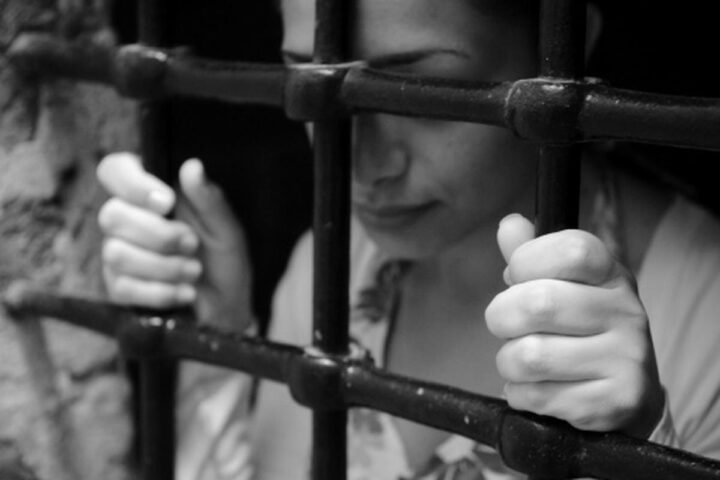Prisons (both prisons and detention centers) always gave negative meaning in everyone perspective. Especially when we talk about the prisoners, we tend to give a bad stigma and stereotype. Well, if in the previous article we discussed the health care system for female prisoners, this time let us take a deeper look at the global trend of female prisoners.
Who are these female prisoners? What are their backgrounds and how are the global trends of women in prisoners currently?
Global Trend
Do you know By 2020, there will be more than 11 million men, women and children in prison worldwide (Fair & Walmsley, 2021). Women and girls are a minority group in this population, accounting for 2–9% of the global prison population. Female prisoners are usually viewed as secondary (“correctional afterthoughts”), sometimes being overlooked because of their small population, thus making them a largely invisible category (Chesney-Lind & Paramore, 2001; Covington, 1998). However, over the last few decades, the number of female prisoners has increased drastically.
There are several parallel and even overlapping paths that lead to the imprisonment of both men and women. These include substance abuse, social marginalization, poverty, and mental health conditions. There are also other pathways leading to imprisonment that must be identified and addressed. Many female detainees have been convicted of non-violent offenses. These abuses are often linked to substance abuse or the result of financial stress and the need to provide for children and other family members (Penal Reform International [PRI], 2019).
Trends in Female Prisoners in Australia
In 2021, Australia’s prison population will be 42,970 (Australian Bureau of Statistics [ABS], 2021). The prison population rate is 165/100,000 national population, with 7.5% of the prison population female (ABS, 2021). The current occupancy rate stands at 112.2% (ABS, 2021).
In Australia, most people in prison are socially disadvantaged and have higher rates of mental health problems, as well as alcohol and drug users, than the general population. In the 12 months prior to entering prison, 74% of female prisoners reported using illegal substances, compared with 13% of the female Australian population (Australian Institute of Health and Welfare [AIHW], 2020).
In the criminal justice system, women from indigenous communities and ethnic minorities face substantial weaknesses. This rate of criminalization and detention of indigenous women is particularly troubling in Australia, where 34% of Aboriginal and Torres Strait Islander women are in prison, but only 2% of the adult female population (Walters & Longhurst, 2017). According to ample evidence, the rate of detention for indigenous women has increased much faster than that of indigenous men.
Trends in Female Prisoners in Southeast Asia
Countries in East and Southeast Asia have the largest numbers of female prisoners. The female prison population in Southeast Asia ranks highly in a global context – with Thailand ranked 5th, the Philippines ranked 7th, Vietnam ranked 8th, Indonesia ranked 9th and Myanmar ranked 11th (Walmsley, 2016). Only twelve prison systems have a female population higher than the international average, five of which are in Southeast Asia (Walmsley, 2016).
The number of women imprisoned for drug offences is significantly higher than that of men, with Southeast Asia having the highest rate of women imprisoned for drug offences. Most Southeast Asian countries have strict criminal procedures and harsh penalties for drug offences. While this is intended to increase individuals’ fear of participating in drug-related activities, severe penalties for drug offenders have not prevented participation in drug-related activities and have raised major concerns about human rights violations (UN, 2005; UNODC, 2016).
According to data from the Institute for Crime and Justice Policy Research, prisons are overcrowded in at least 121 countries (ICPR, 2021). The Philippines has the most overcrowded prisons in the world and its institutions are currently operating at 362% capacity as of March 2020 (World Prison Brief, 2020). Meanwhile, based on Human Rights Watch, 646 prisons in Indonesia hold 270,000 prisoners despite having a capacity of 130,000 (Harsono, 2021).
Trends in Female Prisoners in Indonesia
Imprisoned women often come from poor families, with a history of poverty, domestic violence (KDRT), social deprivation, and early trauma (UN, 2016; Hatton & Fisher, 2018). Among the many problems facing imprisoned women are drug addiction and mental health problems, which are often linked to experiences of abuse and trauma.
Also read: Improving Health Care amongst Female Prisoners
In Indonesia, a link between victimization and substance dependence among female drug users has been found, with nearly 60% of Indonesian women who use injecting drugs being victims of intimate partner violence (Stone & Shirley-Beavan, 2018). As of February 2018, 67.4% of all Indonesian detainees (112,441 men and women out of a total of 166,590 imprisoned residents) were imprisoned for drug-related offences (Alvarez, 2019).
Looking at the above data on female prisoners globally raises a question of reflection for us: do we care enough to contribute to supporting their living standards, or do we just know and view them with negative stigma and stereotypes?
This article was written by an Internship Student from UNSW University in the Internship Program of the Anak Bangsa Merajut Harapan Foundation (Angsamerah Foundation) and The Australian Consortium for ‘In-Country’ Indonesian Studies (ACICIS), Hannah Mendoza
